- TOP
- INFORMATION
- Tips for Your Stay
Tips for Your Stay
Food
Japanese Cuisine
Whet your appetite for your trip to Japan by learning about all the delicious kinds of foods waiting for you! In this section, we'll cover some foods you're certain to encounter in Japan and explain a bit about what goes into making them.
 刺身 | Sashimi
刺身 | Sashimi
Sashimi refers to thinly-sliced fresh raw fish and shellfish. It is served with soy sauce for dipping. It also comes with a spicy condiment called wasabi which is added sparingly to the fish. Sashimi is commonly garnished with shredded daikon radish and perilla leaves.
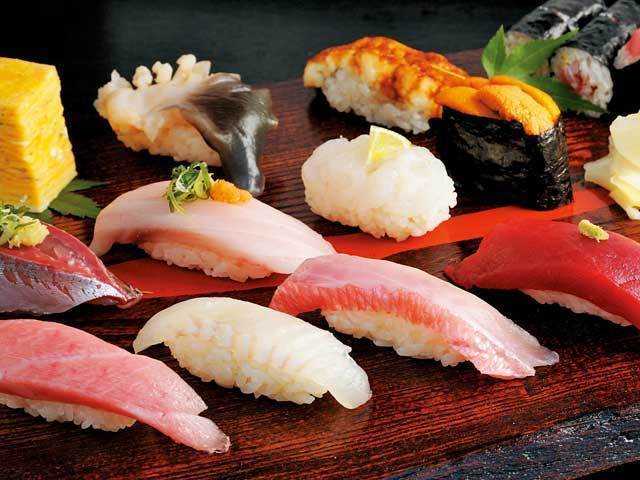 寿司 | Sushi
寿司 | Sushi
Sushi is slices of fresh fish on top of rice that has been seasons with vinegar. The rice is molded by hand into rectangular pieces. Most types of sushi will have a small amount of wasabi spread between the rice and the fish. It is common to dip sushi in soy sauce. Some types of sushi such as tamago (Japanese omlette) are bound with a small strip of seaweed.
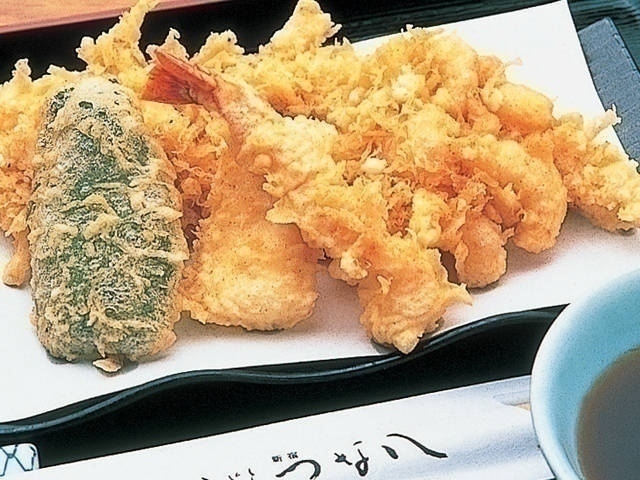 天ぷら | Tempura
天ぷら | Tempura
Tempura is seafood or vegetables coated in flour and egg and then fried in oil. Tempura is commonly served with either salt or a soy-based dipping sauce called tentsuyu. Dip the tempura in a little bit of the salt or sauce and enjoy!
 うなぎ | Unagi | Eel
うなぎ | Unagi | Eel
In Japan, eel is usually prepared using a method called kabayaki, which consists of grilling a freshly cleaned eel over charcoal, coating it in a savory soy-based sauce, and then grilling it a second time. Unadon and unaju are dishes in which the prepared eel is served over rice.
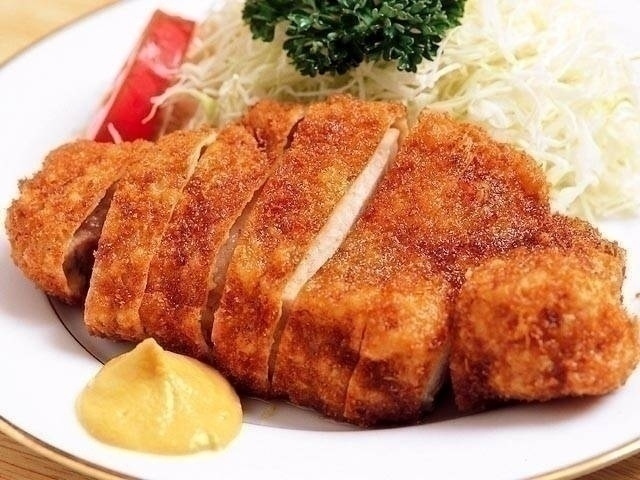 とんかつ | Tonkatsu | Fried Pork Cutlet
とんかつ | Tonkatsu | Fried Pork Cutlet
Tonkatsu (tohn-kah-tsu) is pork cutlet coated in flour, eggs, and bread crumbs that has been deep fried. It is usually eaten with Worcester sauce and Japanese spicy mustard. Another popular way of eating tonkatsu is in katsudon in which these pork cutlets are combined with soy sauce and poached egg and served over rice.
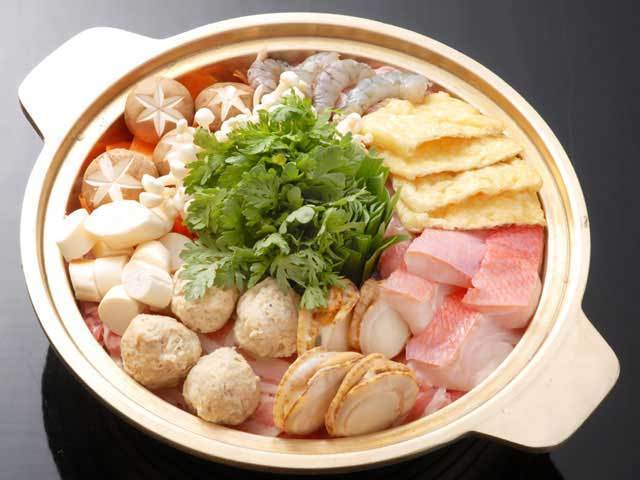 鍋料理 | Nabe Ryori | Hot Pot
鍋料理 | Nabe Ryori | Hot Pot
Nabe ryori refers to various combinations of vegetables, meat, fish, and other ingredients cooked together in a nabe, or pot. The ingredients are usually cooked in batches from a pot placed on the dining table. Diners eat from the same pot, taking pieces as they finish cooking. Popular varieties of nabe dishes include yosenabe, mizutaki, and chankonabe. However, you'll find that the seasonings and ingredients often differ from one restaurant to another.
 すき焼き | Sukiyaki
すき焼き | Sukiyaki
Sukiyaki is a popular nabe dish. Thinly-sliced beef, vegetables, tofu, and other ingredients are cooked in a soup flavored with soy sauce and sugar. Raw egg is used as a dipping sauce.
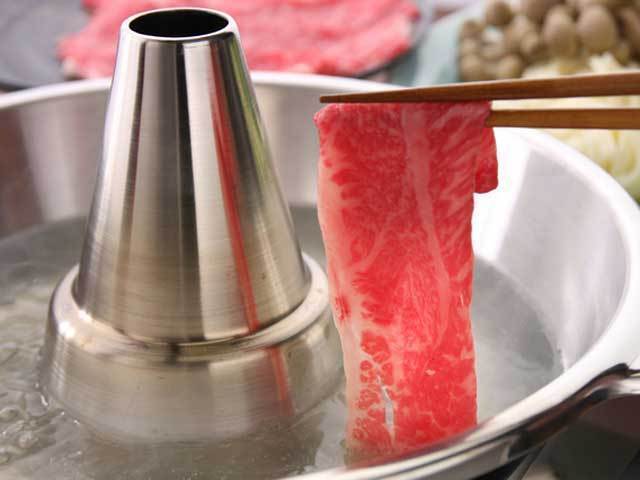 しゃぶしゃぶ | Shabu-Shabu
しゃぶしゃぶ | Shabu-Shabu
Shabu-shabu is another type of nabe dish. Thinly-sliced beef, vegetables, and other ingredients are cooked briefly in a pot filled with boiling water. Commonly-used dipping sauces include ponzu vinegar and sesame-based sauces.
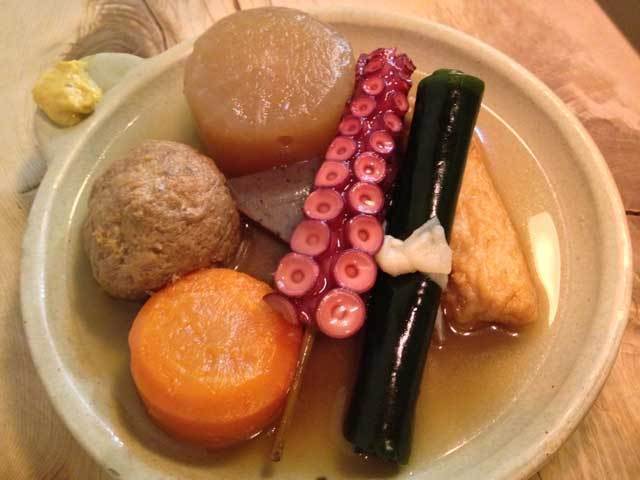 おでん | Oden
おでん | Oden
A winter favorite, ingredients such as Japanese radish, seaweed, hardboiled eggs, tofu, fish paste dumplings, and sometimes even pieces of octopus are cooked in a soup stock made from seaweed, bonito, and soy sauce. It's often served with spicy Japanese mustard on the side.
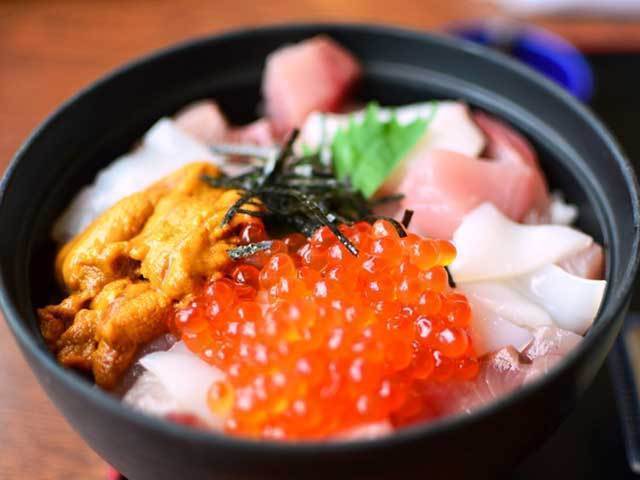 どんぶり | Donburi
どんぶり | Donburi
Donburi is a general term for anything served in a bowl over rice; this is why donburi is sometimes translated as "rice bowl" in English. Common varieties include tendon (tempura over rice), oyakodon (chicken and poached egg over rice), gyudon (beef over rice), and kaisendon (fresh seafood over rice), which is pictured above.
 天丼 | Tendon
天丼 | Tendon
Tempura served over rice with a soy-based sauce drizzled over the top.
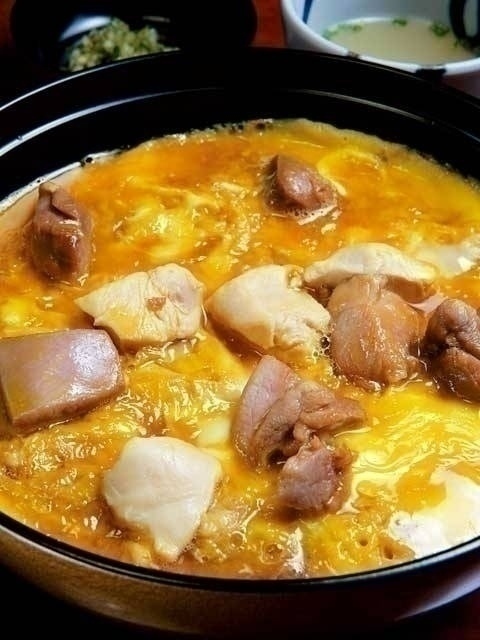 親子丼 | Oyakodon
親子丼 | Oyakodon
Chicken and onions cooked in a soy sauce-based stock called warishita. Beaten eggs are added to the mix and brielfy poached. This is then served over rice.
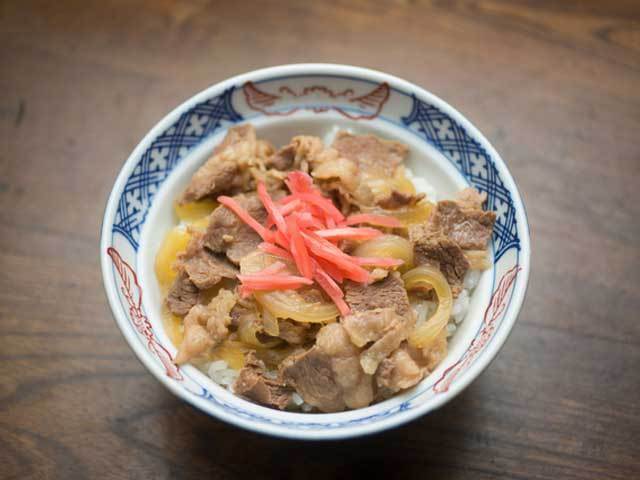 牛丼 | Gyudon
牛丼 | Gyudon
Thinly-sliced beef cooked with onions in soy sauce served over rice. Relatively-cheap chain restaurants like Yoshinoya and Sukiya are popular places to get this delicious meal in a hurry.
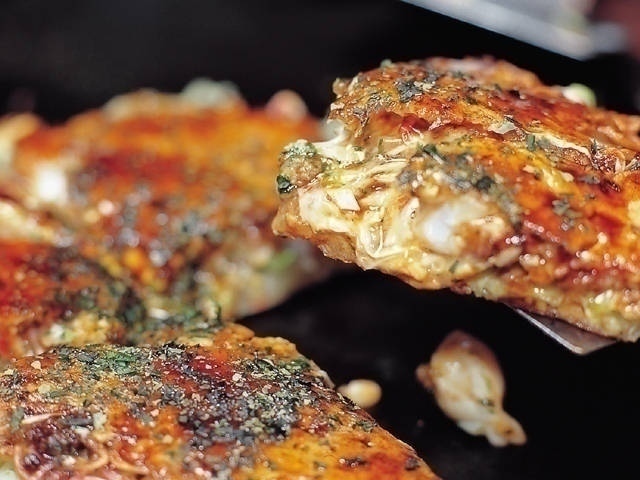 お好み焼き & もんじゃ焼き | Okonomiyaki & Monjayaki
お好み焼き & もんじゃ焼き | Okonomiyaki & Monjayaki
Both these meals have the same main ingredients: a combination of vegetables, meat, and seafood. These ingredients are then mixed into a flour and water batte and cooked on on a griddle. After it has finished cooking, okonomiyaki is topped with Worcester sauce and mayonnaise. With monjayaki, the Worcester sauce and other condiments are mixed in with the other ingredients. The mixture is pushed around the griddle with a tool called a kote and eaten as it cooks.
 焼き鳥 | Yakitori
焼き鳥 | Yakitori
Yakitori is various parts of chicken cut into bite-sized pieces, skewered, and then grilled over charcoal. Choices of flavoring include the soy sauce-based tare or a salty shio flavoring.
 串揚げ | Kushiage
串揚げ | Kushiage
Kushiage is bite-sized meat, vegetables, and seafood that have been skewered, dipped into a batter, and deep-fried. Kushiage is eaten with Worcester sauce.
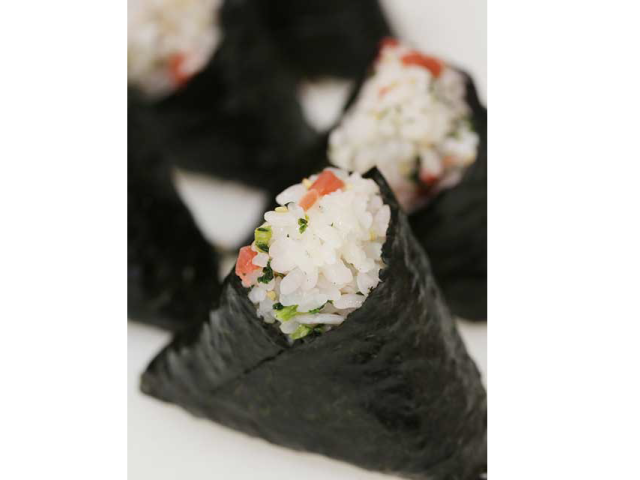 おむすび & おにぎり | Omusubi & Onigiri
おむすび & おにぎり | Omusubi & Onigiri
Ingredients such as grilled salmon and dried plums are placed in rice, which is then formed into triangular or oval-shaped balls and wrapped with seaweed.Being relatively hassle-free and easy to eat, rice balls are a common item in packed lunches. Variations of fillings are practically unlimited, a wide variety of choices are available at convenience stores.
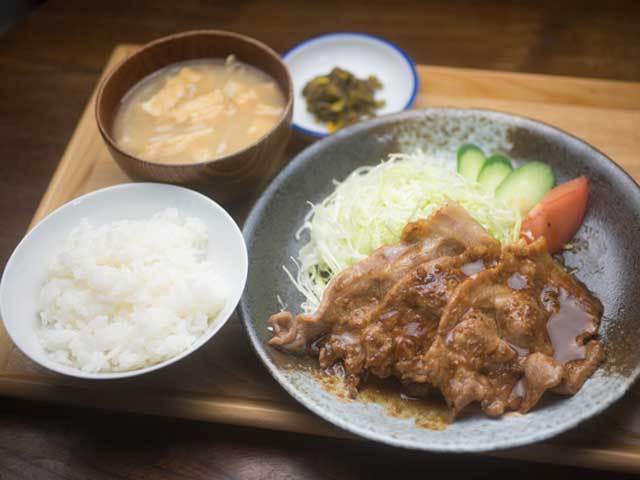 定食 | Teishoku
定食 | Teishoku
Teishoku refers to a set meal consisting of a main dish, such as grilled fish or a fried item, accompanied by rice, miso soup, pickles, or other common side items.
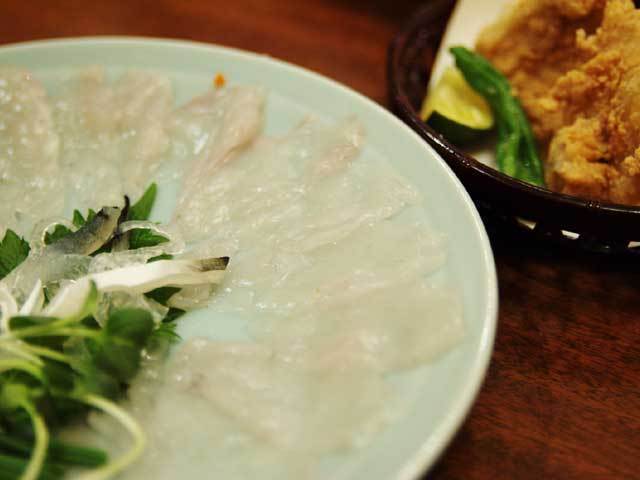 ふぐ | Fugu
ふぐ | Fugu
Fugu or pufferfish is a delicacy and is in season during the winter. Because the blowfish is a poisonous fish, chefs must be licensed to prepare it. It is often prepared as sashimi, battered and fried, or eaten as part of a nabe dish.
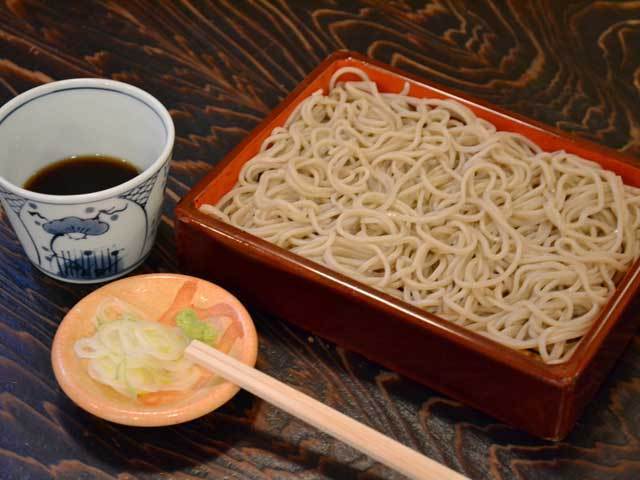 そば | Soba
そば | Soba
These noodles are made from soba-- buckwheat-- flour. Soba noodles can be served in a variety of ways. Kake soba is a dish in which noodles are placed in a bowl and then covered with a hot, soy sauce-based soup. Zaru soba refers to eating the noodles with a cold soup used for dipping. Soba noodles are often eaten with tempura and wild vegetables. Restaurants serving these noodles vary from long-established, traditional restaurants to stand-and-eat establishments, with prices also varying widely.
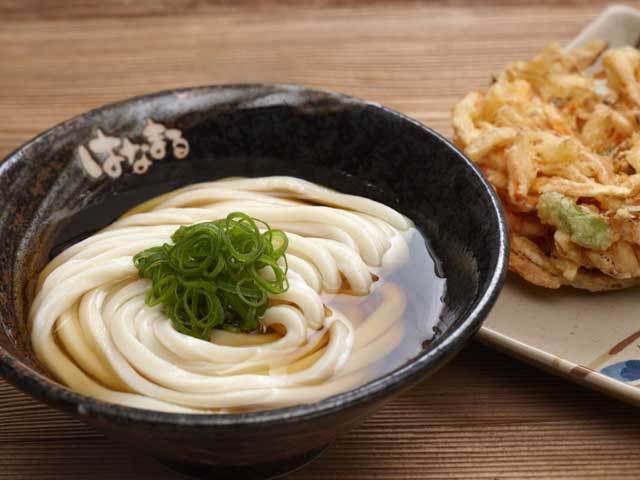 うどん | Udon
うどん | Udon
These noodles are made from wheat flour. They are eaten in many of the same ways as soba noodles, with both hot and cold dishes available. Noodle thickness and flavoring vary depending on the region.
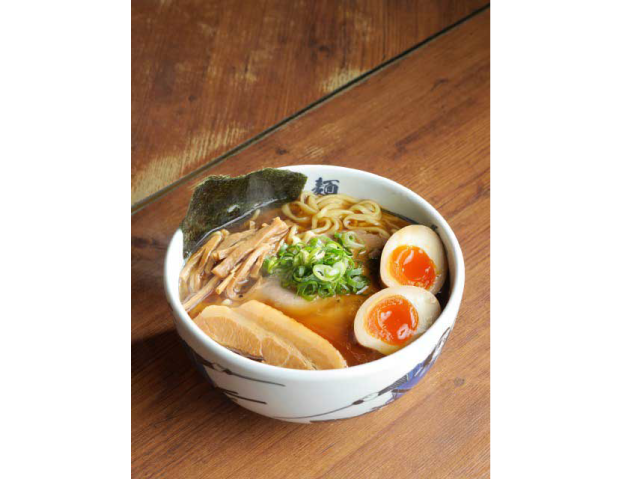 ラーメン | Ramen
ラーメン | Ramen
A meal that was imported from Chinese dish, Japanese ramen has been modified to fit Japanese tastes. There are a variety of soups including shoyu (soy sauce), miso (fermented soybean paste), shio (salt), and tonkotsu (pork bone). Ramen restaurants can be found at just about every corner, and it's not unusual to see a long line in front of popular restaurants.
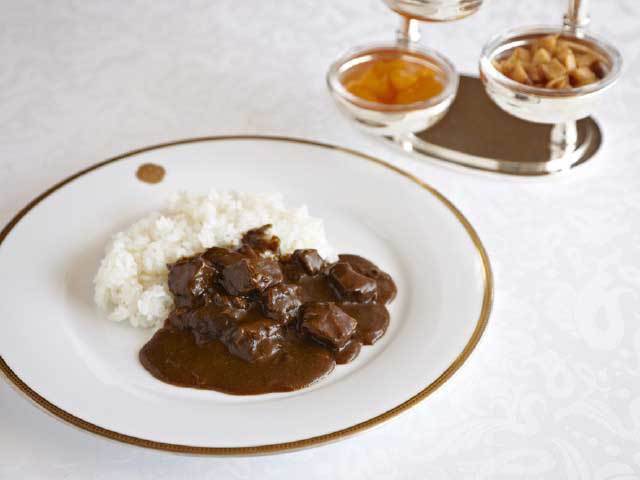 カレーライス | Curry Rice
カレーライス | Curry Rice
Japanese curry rice consists of a thick curry with carrots and potatoes served beside rice. This dish is also a staple in many Japanese households.
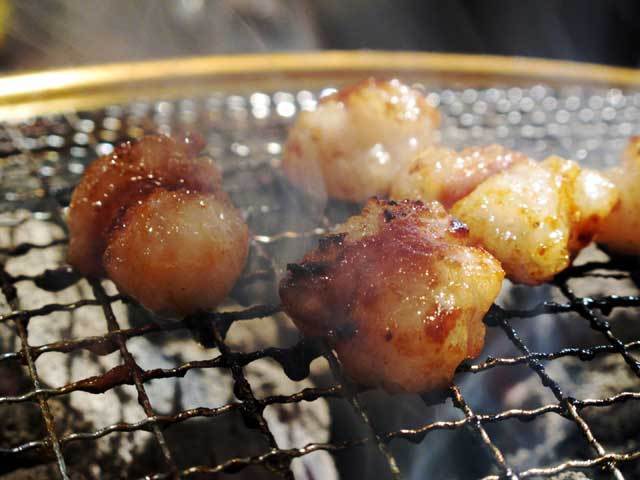 ホルモン | Horumon
ホルモン | Horumon
Horumon is a catch-all term for internal organs. It is often used in dishes such as motsuni in which organ meats are stewed with root vegetables and konnyaku (konjac or Devil's tongue) in miso and soy sauce as well as in horumon yaki in which is marinated organ meat is grilled. The meats used typically come from pigs, cows, and chicken.
Japanese Food Culture
There are many different types of restaurants in Japan. The type of food, cost, and atmosphere varies by type. Japan has a diverse food culture, so there's plenty to try!
 懐石料理・会席料理 | Kaiseki Ryori
懐石料理・会席料理 | Kaiseki Ryori
Kaiseki refers to a Japanese course meal where dishes such as appetizers, soups, sashimi, grilled fish, stewed items, fried items, and rice are served in a specific order. These courses are generally expensive, but some restaurants offer relatively-cheap options such as simplified lunch courses.
 お酒 | O-sake
お酒 | O-sake
O-sake is the word for alcoholic drinks in Japanese. Often called rice wine or sake abroad, nihonshu is made from fermented rice. There are many classifications of nihonshu based on factors such as how much the rice has been polished, whether or not the product was filtered before bottling, how long and in what it was aged, and so on. Depending on the variety and personal preference, nihonshu may be served chilled, at room temperature, or warmed, which is referred to as atsukan. Another type of Japanese spirit is shochu. Primarily in Kyushu and Okinawa, shochu can be made from barley, potatoes, and rice, and the flavors and aromas of these ingredients play a central role in its taste. Japanese spirits can be mixed with hot water and drunk warm or chilled with ice. Chuhai is another popular variety in which shochu is mixed with carbonated water in addition to green tea or the juice of citrus fruits such as lemon or lime.
 居酒屋 | Izakaya
居酒屋 | Izakaya
An izakaya is best described as a dining bar. What is served depends on the establishment, but you can be sure that there will be a wide array of alcoholic drinks to choose from. Izakaya also offer a selection of foods including Japanese dishes such as sashimi and grilled fish as well as other options like French fries and fried cheese. Once you are seated, you will usually be given a hot towel called an oshibori with which to clean your hands. Next comes a small appetizer. This is called an otoshi in the Kanto region and a tsukidashi in the Kansai region. This appetizer is "given" to you in place of a table charge, thus added a few hundred yen to your bill.
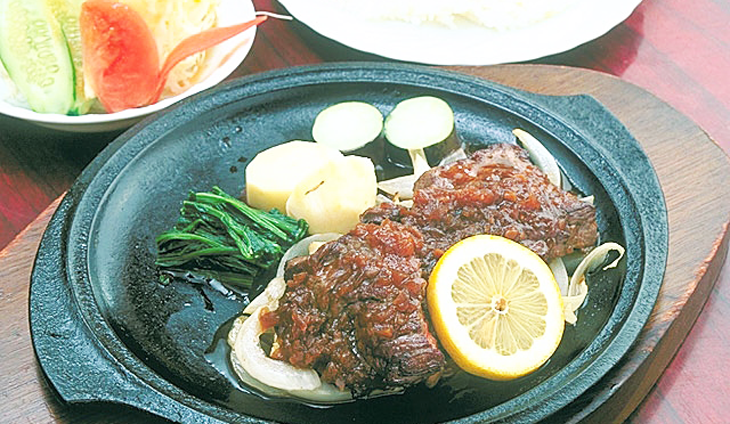 ファミリーレストラン | Family Restaurants
ファミリーレストラン | Family Restaurants
These chain restaurants are called "family restaurants" or famiresu as they are supposed to be family-oriented. They generally serve a wide variety of items, ranging from western dishes like hamburger and steak to Japanese teishoku set meals. Menus are large and include pictures, making these restaurants foreigner-friendly.
 食堂 | Shokudo
食堂 | Shokudo
The word shokudo is commonly used to refer to cafeterias, which should give you a good idea about the style of dining you can expect. These restaurants will serve set teishoku meals, donburi, noodle dishes, and so on. Shokudo tend to be relatively inexpensive.
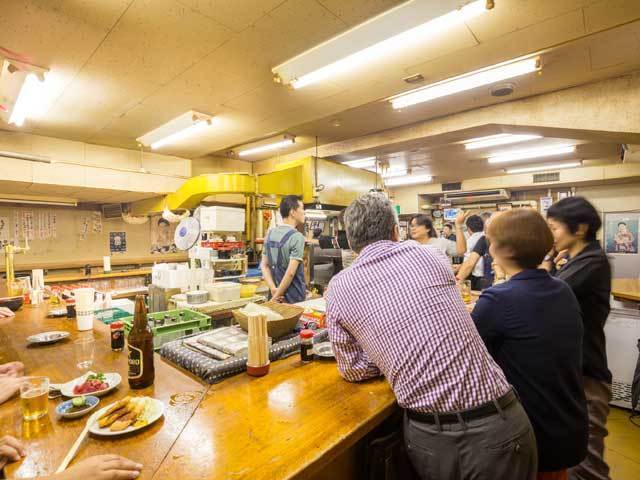 立ち飲み屋 | Tachinomiya
立ち飲み屋 | Tachinomiya
Appropriately named, a tachinomiya is a standing (tachi) bar (nomiya). You can find these kinds of establishments in a variety of places in Japan; a good place to look while in Tokyo would be in entertainment districts such as Shinjuku and Shimbashi. Tachinomiya tend to be small, equipped only with counters. Beverage options usually consist of beer, nihonshu, shochu, and a selection of simple dishes, but some establishments have also begun offering wine and other liquors.
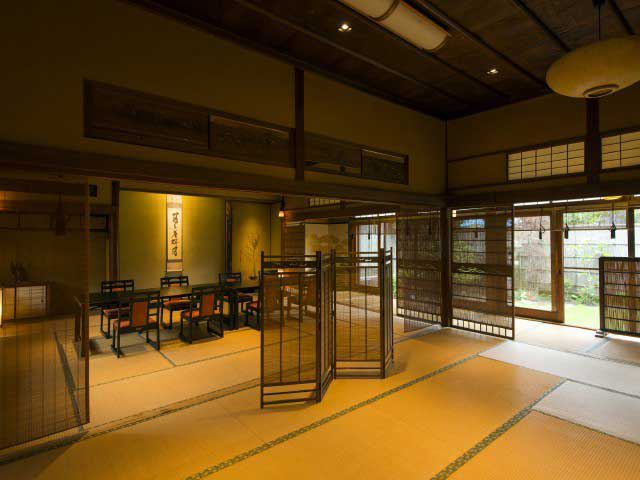
料亭 & 割烹 | Ryotei & Kappo
If you want a luxurious dining experience, head to a ryotei. Ryotei are high-class restaurants that serve Japanese cuisine. They often offer private seating and some can even arrange for geisha, female entertainers who perform traditional Japanese dance and music, to attend a party. Kappo are very similar to ryotei, except that they offer counter seating and tend to be more casual.
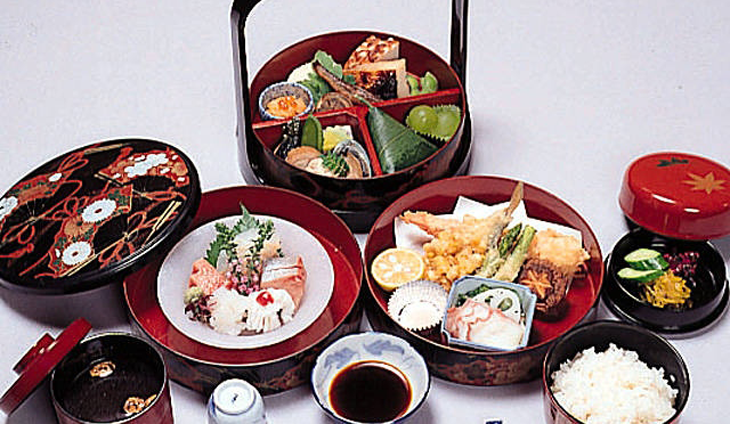 京料理 | Kyo Ryori
京料理 | Kyo Ryori
Drawing from kaiseki cuisine and Buddhist cuisine served at temples known as shojin ryori, kyo ryori cuisine developed over time in Kyoto, which was once the thriving capital of Japan. Because Kyoto once lacked free access to seafood products, this cuisine focuses on using local Kyoto vegetables and dried foods. Preparation and presentation are given careful attention. The cook’s sense of aesthetic and hospitality can be felt in the seasonal selection of dinnerware and the delicate flavoring of dishes.
 豆腐料理 | Tofu Ryori
豆腐料理 | Tofu Ryori
As the name suggest, tofu ryori consists of various preparations of tofu. This includes coating it with miso and baking it to make aromatic dengaku or boiling it in a seaweed soup stock to make yudofu. Another specialty of tofu ryori is yuba, the skin that forms when soy milk is heated. This can be eaten as-is or in a soup made with a soy sauce base.
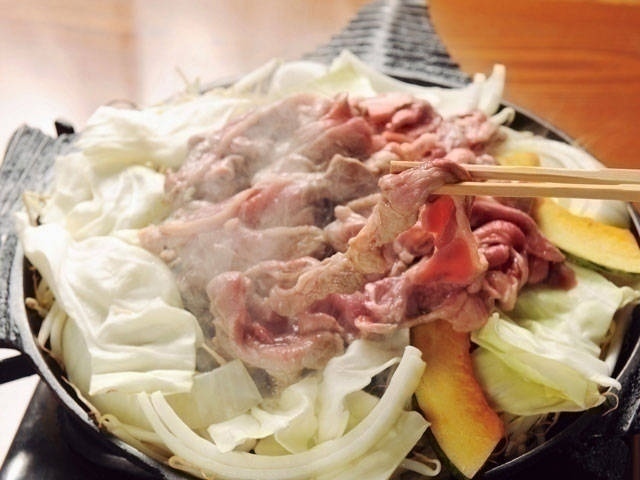 Mongolian BBQ/Japanese:ジンギスカン(Jingisukan)
Mongolian BBQ/Japanese:ジンギスカン(Jingisukan)
Thinly-sliced mutton is cooked with vegetables before being eaten. A cast-iron pot with a raised center is used and the mutton is placed in the center so that the juices run off into the surrounding vegetables, adding intense flavor.
Table Manners
In Japan, there is a strong emphasis placed on savoring the delicate aromas of a meal. You should avoid wearing strong perfume or cologne when going to restaurants. It is customary (and practical!) to hold the rice bowl in one's hands when eating. When using chopsticks, please remember that passing food from one's own chopsticks to another's chopsticks and sticking chopsticks in rice so they are standing straight up are actions that resemble ceremonies performed at funerals and are thus considered unlucky and bad manners.
Sushi Restaurants
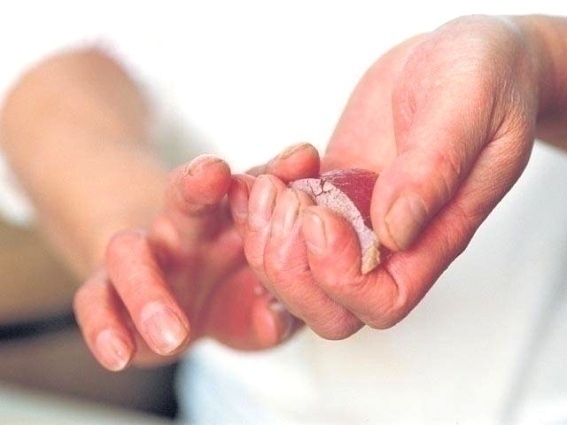
At a conveyor belt sushi restaurant, small plates of sushi travel around the restaurant continuously on a conveyor belt. You can take plate that looks good to you. The price of each plate is determined by the color of the plate. Tea, cups, chopsticks, soy sauce, and gari are all self-service and meant to be shared with nearby customers, so be considerate and only take what you will use for yourself. Remember, it's bad manners to return a plate that you've removed from the conveyor belt. Once you take it, it's yours!
Counter Sushi Restaurants
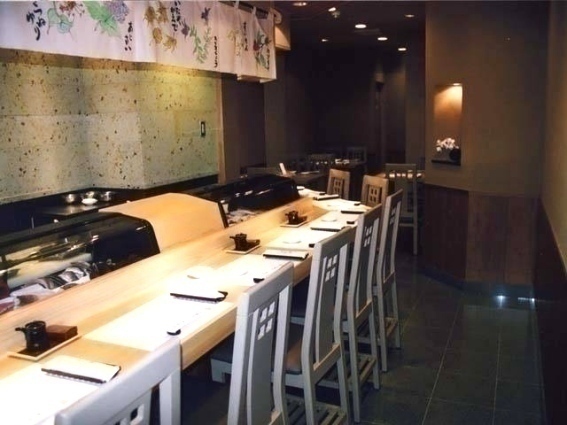
It's a good idea to make a reservation when possible. When ordering, you can let the chef know if you have any dislikes or preferences as well as check how much certain types of fish may cost. If you're not sure what to order, leave it to the chef. When eating the sushi, it's fine to use your either hands or a pair of chopsticks. Turn the sushi upside down and dip the topping in soy sauce. Eating the sushi in one bite is preferable. Before eating the next piece of sushi, you can cleanse your pallet by either eating some pickled ginger called gari or by taking a drink of tea.
Conveyor Belt Sushi

At a conveyor belt sushi restaurant, small plates of sushi travel around the restaurant continuously on a conveyor belt. You can take plate that looks good to you. The price of each plate is determined by the color of the plate. Tea, cups, chopsticks, soy sauce, and gari are all self-service, to be shared with nearby customers, so be considerate and only take what you will use for yourself. Remeber, it's bad manners to return a plate that you've removed from the conveyor belt. Once you take it, it's yours!
Cafes & Fast Food
Cafes and fast food restaurants are great for taking a quick break during your travels. Here's some information about the many different types of cafes you can find in Japan.
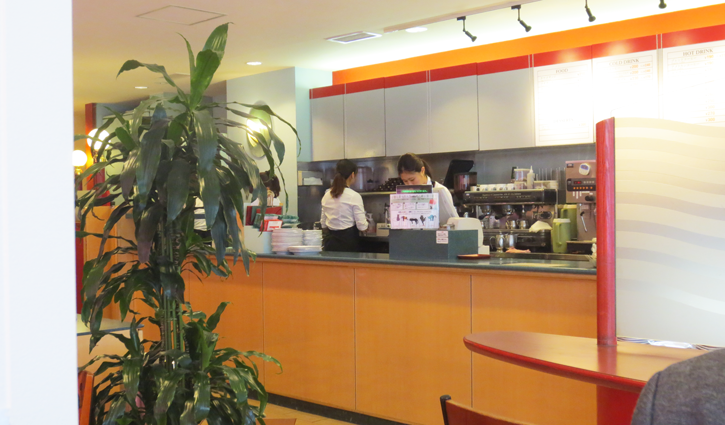 Coffee Shops
Coffee Shops
At these shops, you place your order at the counter and it is handed to you before you sit down. In Japan, you can find countless coffee shops at major train stations and in the busier parts of town, and they provide a convenient option for taking a break. Franchises that originated in Japan include Doutor Coffee, which has the largest number of locations and is popular for its hot dogs, Saint Marc Cafe, which has a large selection of breads, as well as Cafe Veloce and Pronto. Starbucks and Tully’s, which have locations around the world, are also common. Starbucks also offers free Wi-Fi.
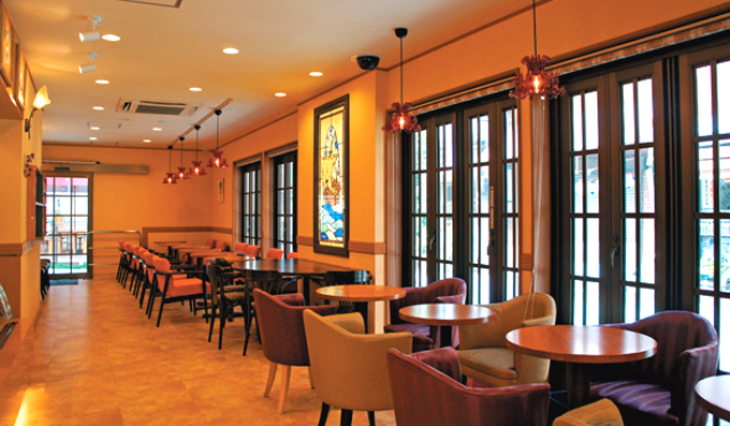 喫茶店 | Kissaten
喫茶店 | Kissaten
A kissaten is a Japanese-style café. These serve coffee, tea, juices, and other beverages along with light meals such as sandwiches, cakes, and other sweets. Your order is taken after you are seated and then brought out to you. Many cafes offer reasonably-priced breakfast options that pair a drink with something like toast or eggs. There are usually sofas or other comfortable seating, allowing you to relax and enjoy yourself. While there are franchises like Kohikan, many cafes are privately owned.
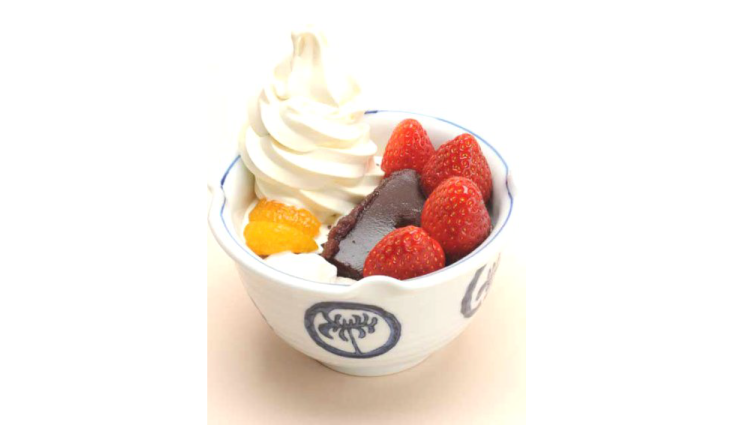 甘味処 | Kanmidokoro
甘味処 | Kanmidokoro
A kanmidokoro is a café specializing in Japanese deserts. Here you'll find classic sweets like oshiruko, a sweat red bean soup with grilled mochi and rice dumplings. There is also anmitsu, made with blocks of agar jelly called kanten and a sweat bean paste called anko, and mitarashi dango, which are dumplings flavored with sweat soy sauce.
 Hamburger Shops
Hamburger Shops
Just like you will see countless coffee shops at major train stations and in the busier parts of town in Japan, you will also see numerous hamburger shops. Franchises that originated in Japan include Mos Burger, well-liked for its menu items that make use of Japanese ingredients like the Rice Burger and the soy sauce-based Teriyaki Burger, as well as Lotteria and Freshness Burger. Each of these shops has its own unique menu. You'll also find familiar franchise like McDonald's, but even these offer special Japan-only options such as the Teriyaki McBurger.
Other Fast Food
There are many other fast food options, including Kentucky Fried Chicken and Mister Donut. One that is unique to Japan is shops that serve takoyaki – small pieces of octopus inside of a water-and-flour batter formed into balls and then cooked – but they usually only serve food to-go.
Shopping
Shopping in Japan
Shopping is sure to be a part of your trip to Japan. Be a smart shopper and save money by learning about the various types of stores you will find in Japan.
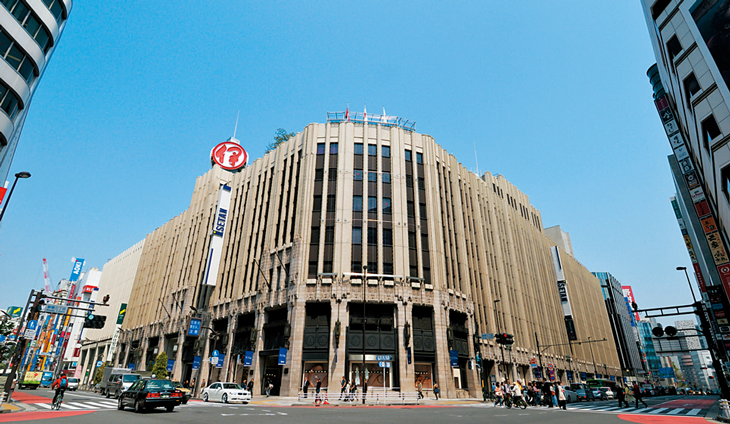 Department Stores
Department Stores
Department stores carry the top brands from around the world, including national brands. At most department stores the top floors are occupied by restaurants, while the basement floor – referred to as “depachika” – is dedicated to fresh foods and sweets. Most department stores have a duty-free counter.
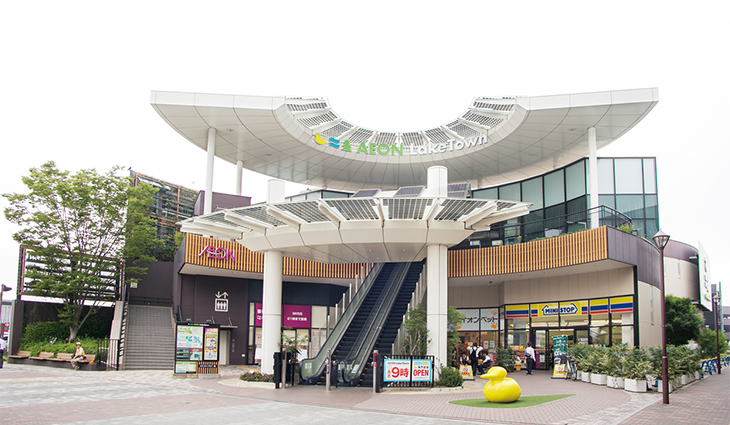 Shopping Malls
Shopping Malls
Customers can purchase food items, general goods, and clothing at these large-scale commercial buildings. A variety of restaurants, cafes, and bars are often found inside the buildings, and some also include facilities such as movie theaters, galleries, or “game center” video arcades.
 Electronics Retail Stores
Electronics Retail Stores
These stores carry all kinds of consumer electronics. Many of the products are sold at a discount, but successfully haggling prices down is not unheard of. Most of the electronics retail stores in the Akihabara, Shinjuku, and Yurakucho areas have duty-free counters. Yodobashi Camera and Yamada Denki are two well-known chains.
 Discount Stores
Discount Stores
Processed foods, daily necessities, clothing, electronics, toys, and more are sold at discounted prices at these stores. Don Quijote, with their large floor space and a wide variety of products, is one of the most well-known and popular examples.
 Drugstores
Drugstores
In addition to medicine, drugstores also carry health foods, beauty products, daily necessities, drinks, and more. Many of the items are sold at a discount. Many of these retailers are chain stores, such as Matsumoto Kiyoshi.
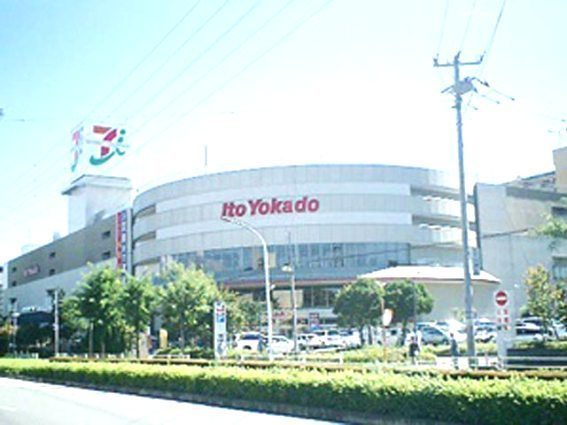 Supermarkets
Supermarkets
Fresh foods, processed foods, and drinks are among the products sold at supermarkets. You can also purchase seasonings and condiments like soy sauce – an essential part of Japanese cuisine.
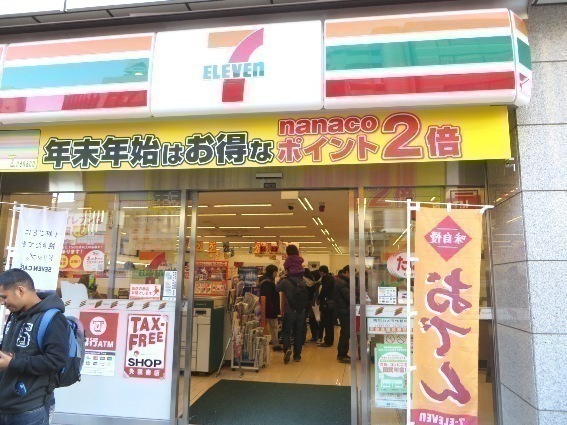 Convenience Stores
Convenience Stores
Seemingly located at every corner, these stores often operate 24 hours a day year-round. The majority of products carried in these stores consists of drinks and processed foods, including rice balls, sandwiches, cup ramen, and sweets. Convenience stores also stock a limited selection of general goods, like batteries and stationary, as well as newspapers and magazines. Parcel delivery services, ticket purchases and pickup, photo printing, and other services are also offered.
 100 Yen Shops
100 Yen Shops
Products are generally priced at 100 yen each, before tax. These shops carry a wide variety of goods, including processed foods, kitchen supplies, stationery, gardening supplies, and toys. DAISO and CanDo are two popular 100 yen shop chains.
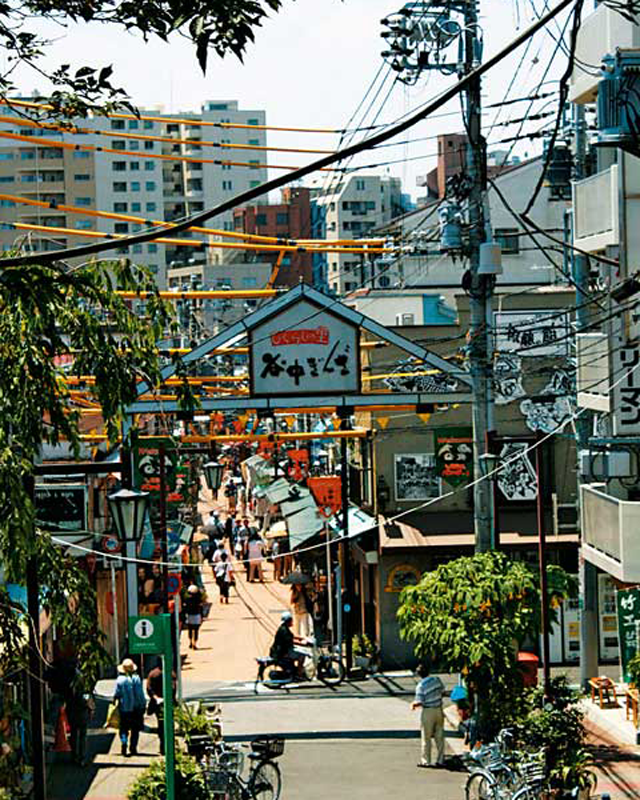 Shopping Streets
Shopping Streets
In addition to small, private shops selling meat, fish, and sweets, other establishments like shokudo (cafeteria-style) restaurants and cafes line both sides of these streets. Many of the shops offer food to-go. Yanaka Ginza in Tokyo is a well-known example of one of these shopping streets.
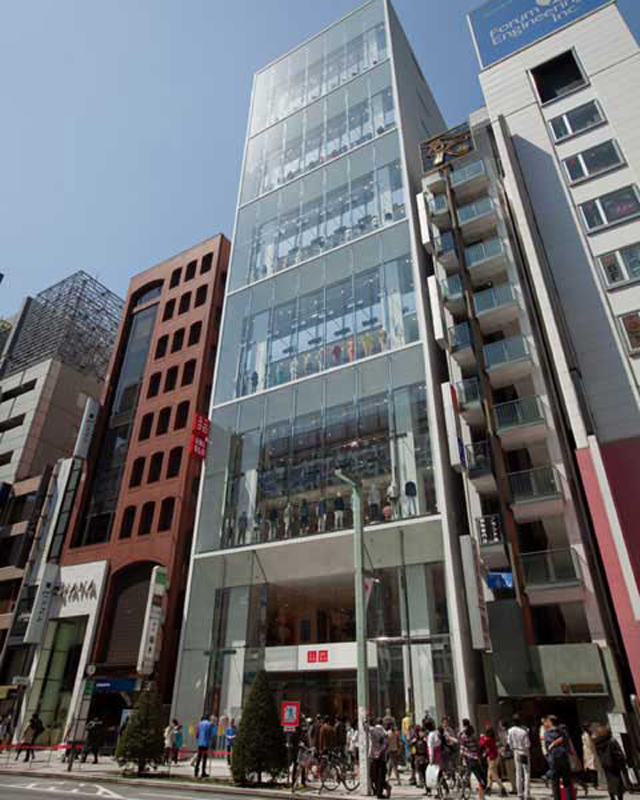 UNIQLO
UNIQLO
This is exemplary Japanese casual clothing brand. Simple designs and reasonable prices make UNIQLO popular with men and women of all ages. UNIQLO also offers some products in collaboration with other popular brands.
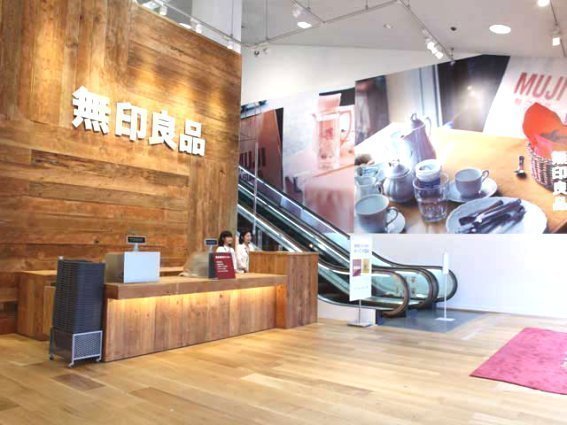 MUJI
MUJI
This Japanese general goods and clothing manufacturer also offers furniture and processed foods. MUJI is known for its remarkably simple and refined designs. Emphasis is placed on comfort and usability, and MUJI products have a reputation for high quality.
Shopping Etiquette
If you would like to try something on, check with the staff to make sure it's okay. Note that trying on certain items may not be allowed. Fitting rooms are for individual use, so please wait your turn. When trying on hats or other articles of clothing that you pull over your head, don't forget to use the supplied face cover sheets to avoid dirtying or damaging the product.
Store Information
Department stores and electronics retail stores are generally open from 10am to 8pm, but this may vary depending on the store, day of the week, season, etc. Convenience stores are open 24 hours. Hours of operation for ramen and other restaurants vary widely by location. Some may open at 11am, while others may only be open during the evenings after 5pm. Be sure to check in advance.
Tax-Free Shopping
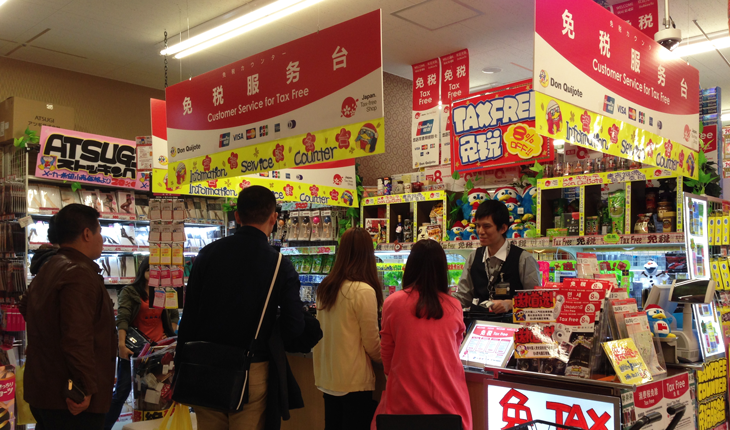
All items that can be taken back home with you, including electronics, food products, and cosmetics, are eligible for tax exemption. In order to take advantage of tax-free shopping, you must be a foreign visitor with a temporary stay status (less than 6 months). You will need to show your passport, so don't forget it! Japanese citizens that reside overseas with an intended stay of 2 or more years are also eligible when visiting Japan. Tax-free service is available at shops displaying the tax-free shop logo.
Items that qualify for tax exemption:
For general items, the purchase total must exceed 10,000 yen (before tax) per store, per day.
For consumables, the purchase total must be more than 5,000 yen and less than 500,000 yen per store, per day.
Show your passport at a tax-free shop and fill out the necessary form.
How to shop tax-free
A) Pay the price minus consumption tax when shopping
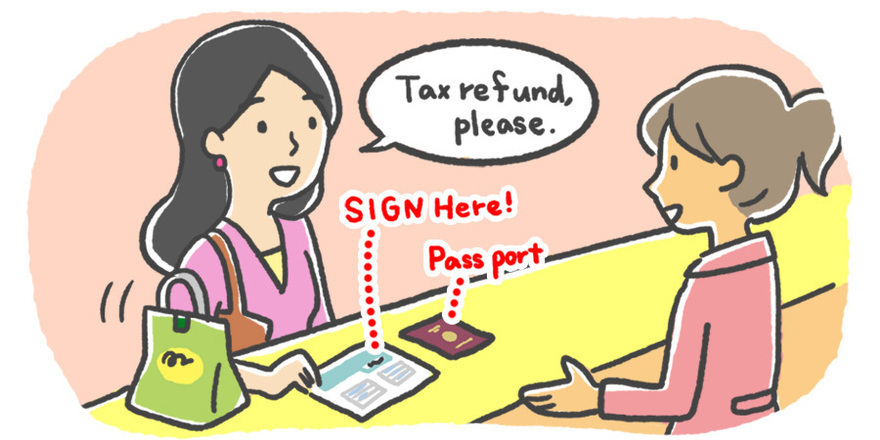 ① When purchasing goods at a tax-free shop, show your passport. Pay the price minus consumption tax and then sign the Covenant of Purchaser form.
① When purchasing goods at a tax-free shop, show your passport. Pay the price minus consumption tax and then sign the Covenant of Purchaser form.
 ② A proof of tax-tree purchase (a document stating that tax-exempt goods were purchased) will be affixed to your passport and a stamp will be applied where the Record of Purchase Card meets the passport page.
② A proof of tax-tree purchase (a document stating that tax-exempt goods were purchased) will be affixed to your passport and a stamp will be applied where the Record of Purchase Card meets the passport page.
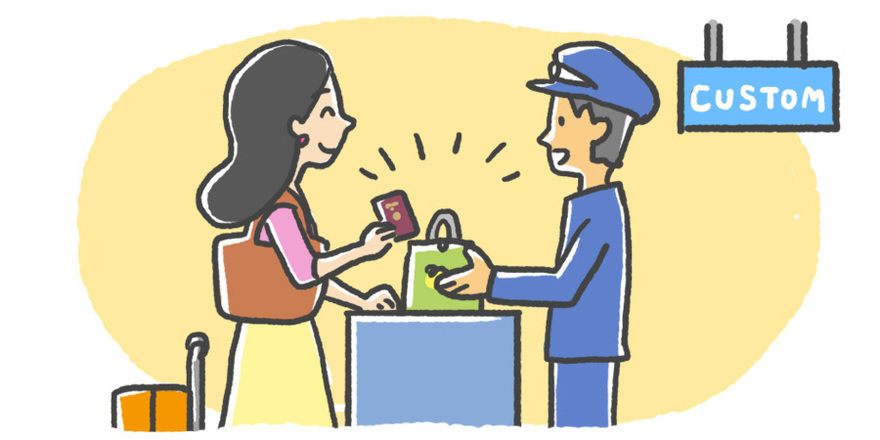 ③ When departing Japan, the proof of tax-free purchase document will be collected by customs.
③ When departing Japan, the proof of tax-free purchase document will be collected by customs.
B) Pay the full price, including consumption tax, and receive a consumption tax refund at the tax-free counter on the same day
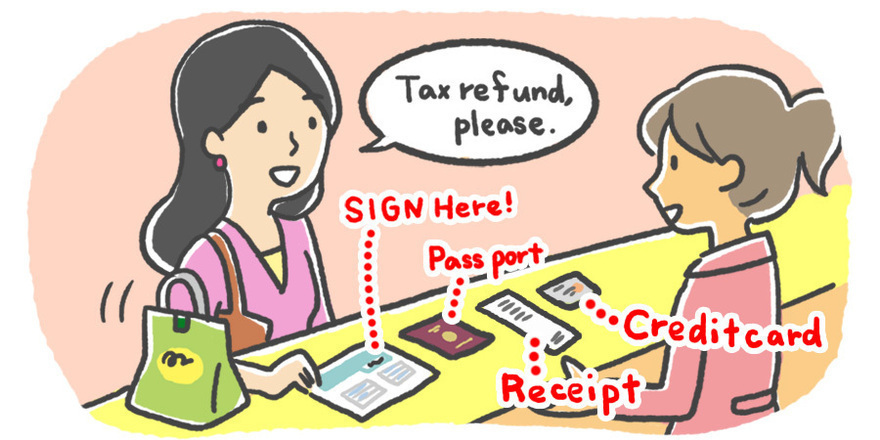 ① Visit the specified tax-free counter and present the purchased goods, your passport (entry stamp required), the receipt, and the card used for the purchase if you paid by credit card. Then sign the Covenant of Purchaser form.
① Visit the specified tax-free counter and present the purchased goods, your passport (entry stamp required), the receipt, and the card used for the purchase if you paid by credit card. Then sign the Covenant of Purchaser form.
 ②The consumption tax paid will be refunded in cash or back to the credit card used.
②The consumption tax paid will be refunded in cash or back to the credit card used.
*A service fee may be deducted from the amount refunded.
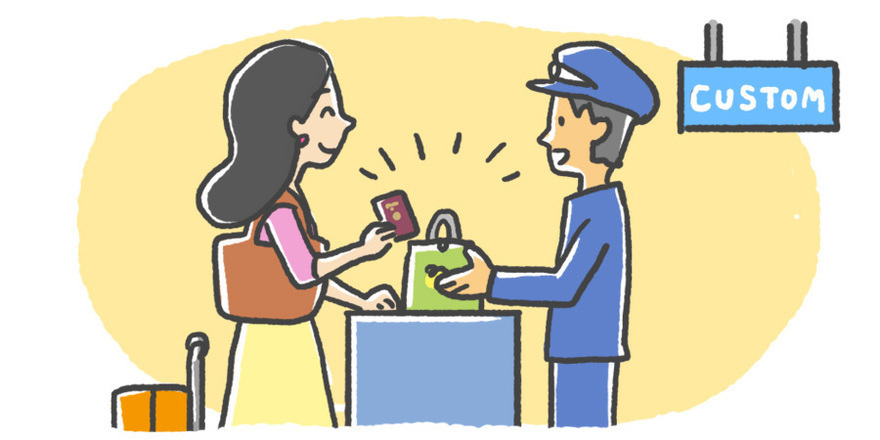 When departing Japan, the proof of tax-free purchase document will be collected by customs.
When departing Japan, the proof of tax-free purchase document will be collected by customs.
Click here for more details.
Seasonal Sales in Japan
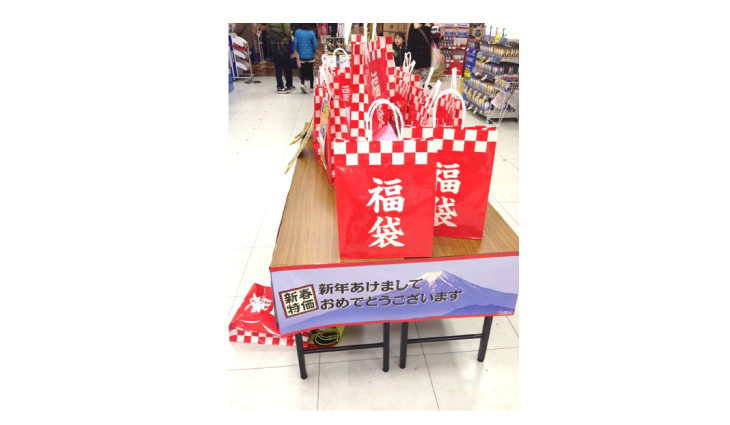
There are major seasonal sales twice per year: during summer and winter. Products are often discounted substantially during this time, so it's the best time to find a bargain.
●The summer sales season last from the end of June to early July. (Department store sales begin in early July.)
●The winter sales season is in early January.
Other sales seasons sometimes occur during spring (end of March thru April) and fall (end of September thru October).
You'll definitely want to check out the fukubukuro* sales that are popular during New Year Sales starting from January 1st.
*Fukubukuro, which means "lucky bag" in Japanese, is a bag stuffed full of various merchandise. The contents of the bag remain a mystery until it is bought and opened. The total value of these contents is often much greater than the price of the bag, so Japanese people will often begin lining up early in the morning to purchase them.
Smart Shopping
Tip #1
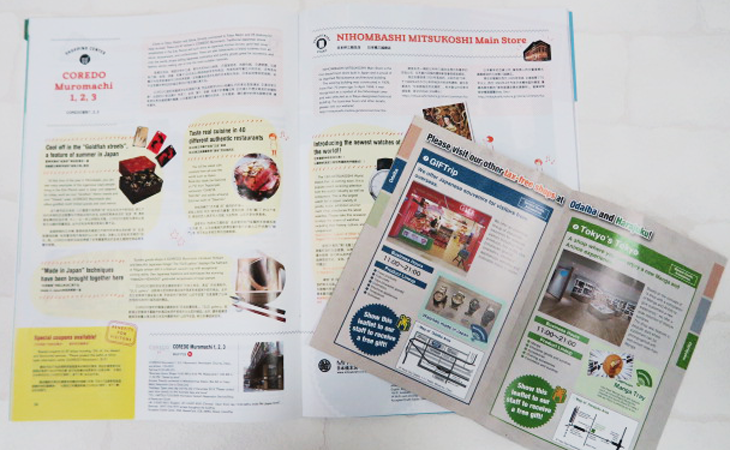
Use coupons.
By using coupons found in free newspapers and magazines or apps like DiGJAPAN!, you can often receive discounts or free gifts.
Tip #2
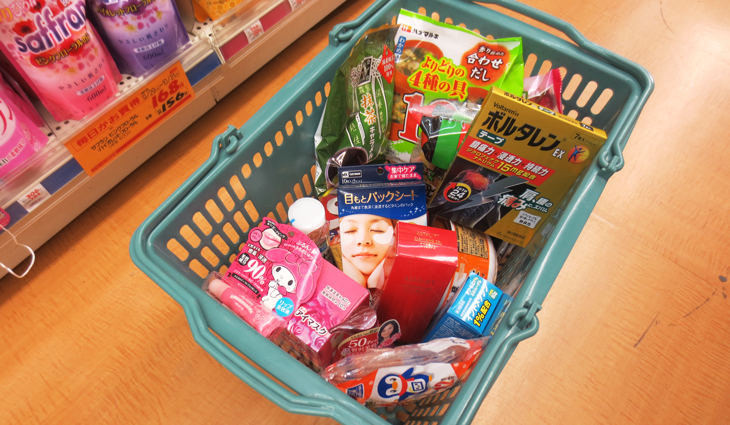
Take care of your souvenir shopping at 100 yen shops and drugstores.
From green tea sweets and other food items to handy kitchen products, you can find almost anything in 100 yen shops. There is no shortage of attractive, useful items. The drugstore is also a great place to find bargains on cosmetics, facial cleansing foams, medicine, and more.
Tip #3

Products made in Japan will be cheaper when bought in Japan than when bought in your own country.
You will often get the best value by buying made-in-Japan food items and products like watches or shoes when in Japan. If there is something specific that you want to buy, it's a good idea to check prices in your own country before your trip.
Entertainment
Entertainment Spots
Many stores and other businesses in Japan close relatively early, so it's a good idea to double check closing times when making your evening plans. Japan is a comparatively safe country, so you should feel safe going out at night. However, please do use reasonable caution when going to nightlife districts.
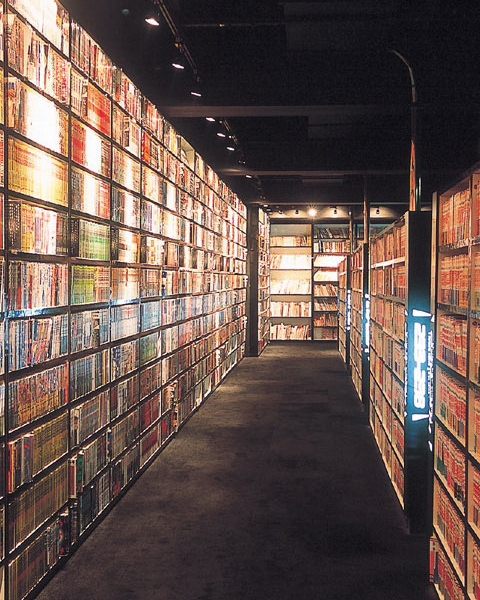 マンガ喫茶 & インターネットカフェ | Manga Kissa & Internet Cafes
マンガ喫茶 & インターネットカフェ | Manga Kissa & Internet Cafes
These establishments primarily function as a place to enjoy all-you-can-read manga or use the internet. Most locations offer all-you-can-drink coffee and soft drinks, along with access to computers, gaming systems, TVs, and DVDs. There are various seating arrangements, including private single-person rooms and two-person seating options. Some cafes also feature pool tables, darts, showers, massage chairs, and more. They are open 24-hours and charge based on the amount of time spent there. Some kind of personal identification, such as a passport, is required upon entrance.
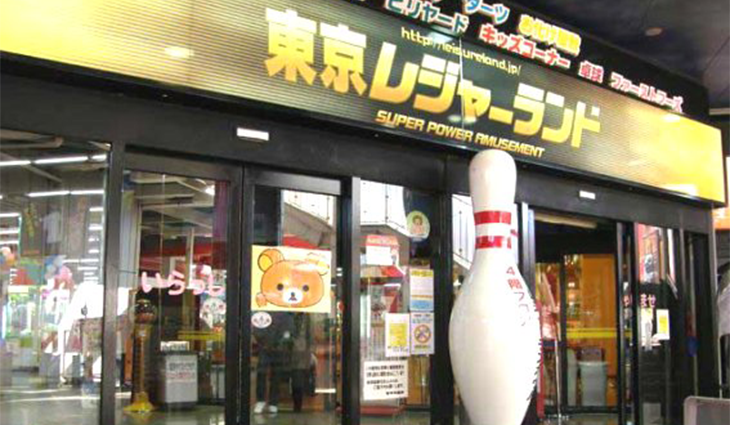 ゲームセンター | Game Center
ゲームセンター | Game Center
In addition to video games and music games, you can find Purikura machines, which let you take pictures and print them on stickers, as well as Gachapon machines, which dispense a plastic capsule with a toy inside when you turn the handle. Many of the game centers feature popular anime-related games and goods.
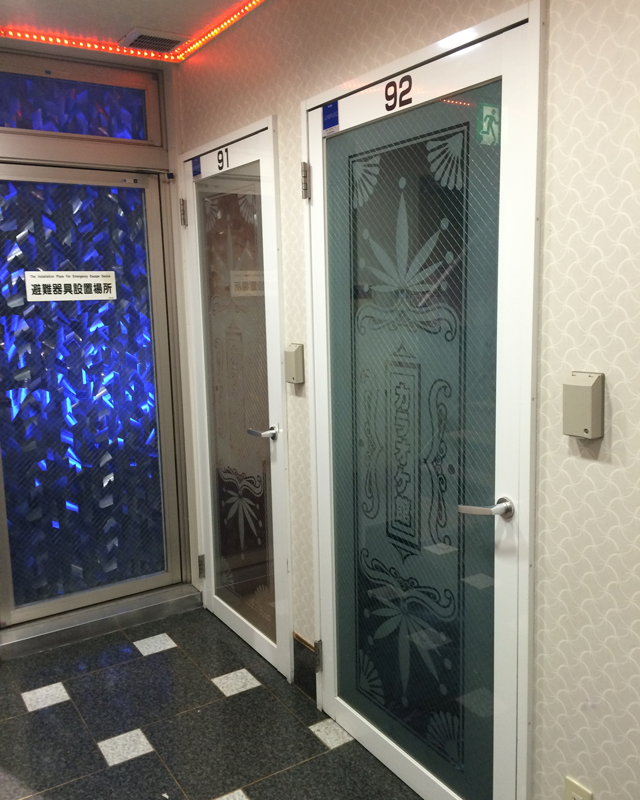 カラオケボックス | Karaoke Boxes
カラオケボックス | Karaoke Boxes
These establishments primarily function as a place to enjoy karaoke, in which you sing along with instrumental accompaniment. Private rooms allow small groups of people to enjoy karaoke together and the karaoke systems allow you to select from tens of thousands of songs, with many establishments offering English, Korean, and Chinese songs as well. Prices are dependent upon hours spent and the number of people. Many locations also serve food and drink.
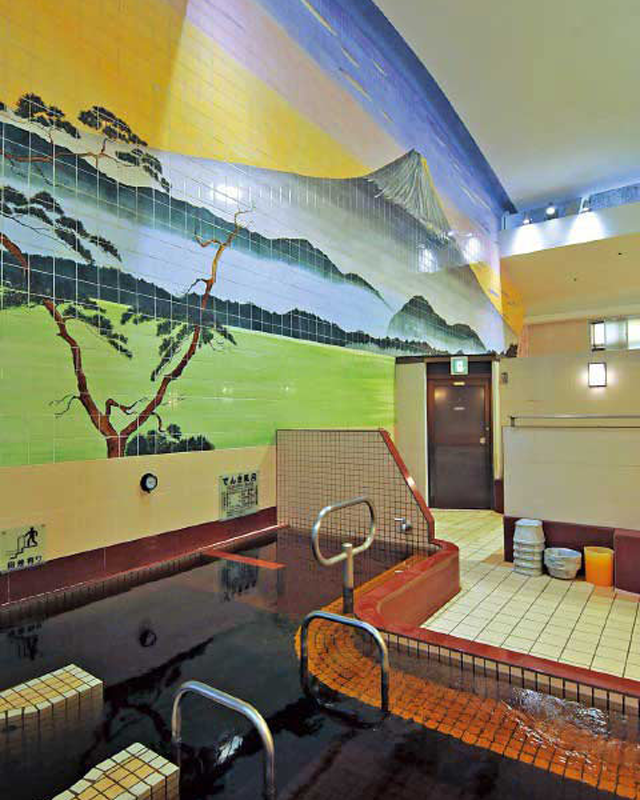 銭湯 | Sento (Public Bathhouses)
銭湯 | Sento (Public Bathhouses)
Sento means public bathhouses in Japan. They are divided into male and female sections. Each section has its own dressing room where you undress before entering the bathing area. People generally bring their own soap, shampoo, and towel, but it’s often possible to rent or purchase these items. Entrance costs around 400 yen on average. Some of the older, traditional sento feature drawings of Mt. Fuji on the walls in the bathing area. Larger bathhouses that include multiple baths, saunas, and salons are called Super Sento and it usually costs from 1,000 yen to 3,000 yen to enter. Some baths also allow both males and females to bathe together in a bathing suit.
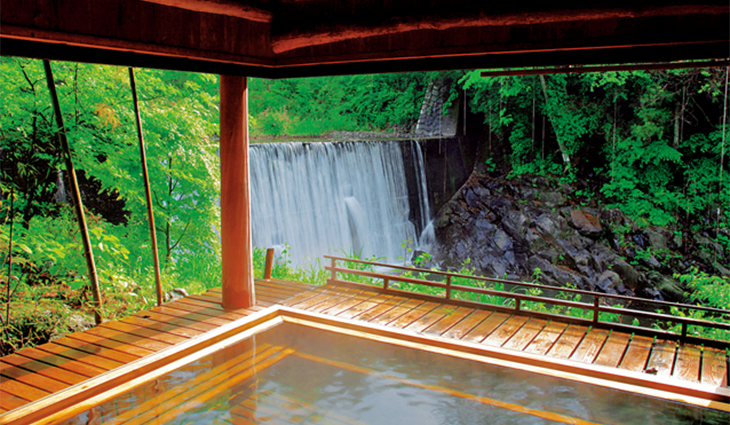 温泉 | Onsen (Hot Springs)
温泉 | Onsen (Hot Springs)
There are currently over 3,000 hot springs in Japan. Hot springs are very popular among Japanese people, who often go on trips to visit them. Recent advances in drilling technology have led to hot springs facilities being increasingly prevalent even within populous cities. In Japan, hot springs are traditionally enjoyed as part of a travel package including a stay at a ryokan with included meals, but it is also common to take a day-trip to bathe in a hot spring. Areas called Onsen-gai where ryokans, recreational facilities, and souvenir shops are all located within close proximity are common, with Kusatsu, Atami, and Beppu being well-known examples. On the other hand, there are also hot spring locations with just one or only a handful of ryokan located nearby.
Tourist Information

You can find maps, pamphlets, event information, and information about sightseeing facilities and accommodations at tourist information centers. Some centers will be able to provide information in a variety of foreign languages. You can sign up for low-cost tours conducted in a variety of languages at the Tokyo Metropolitan Government Building.
Accommodations
Differences between Hotels, Ryokan, and Minshuku
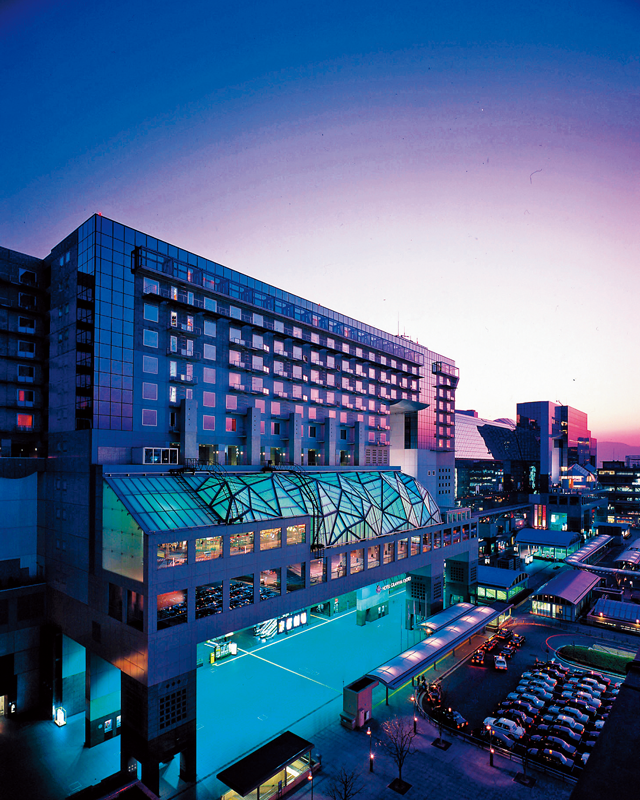 Hotels provide the kind of facilities you would expect from accommodations in any other country.
Hotels provide the kind of facilities you would expect from accommodations in any other country.
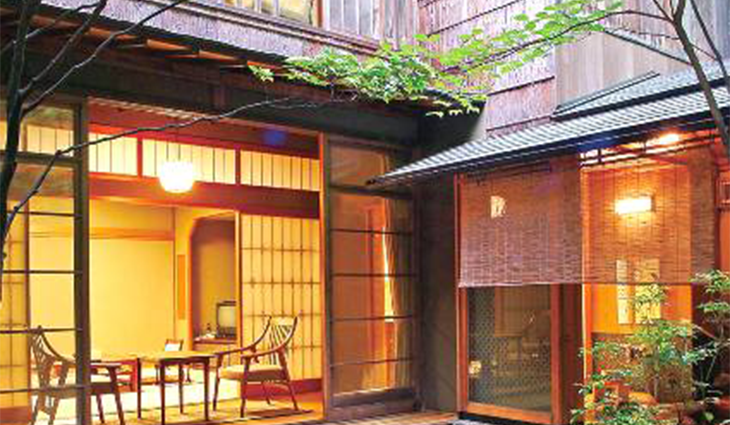 Ryokan are uniquely Japanese accomodations. They're a great way to get a taste of Japanese culture and hospitality. Ryokan will have Japanese-style guest rooms with tatami mats, and often have futons instead of beds for their guests. Some ryokan even have hot springs bathing facilities. If your plan includes an in-room meal, a member of the staff will serve you dinner in your own guest room.
Ryokan are uniquely Japanese accomodations. They're a great way to get a taste of Japanese culture and hospitality. Ryokan will have Japanese-style guest rooms with tatami mats, and often have futons instead of beds for their guests. Some ryokan even have hot springs bathing facilities. If your plan includes an in-room meal, a member of the staff will serve you dinner in your own guest room.
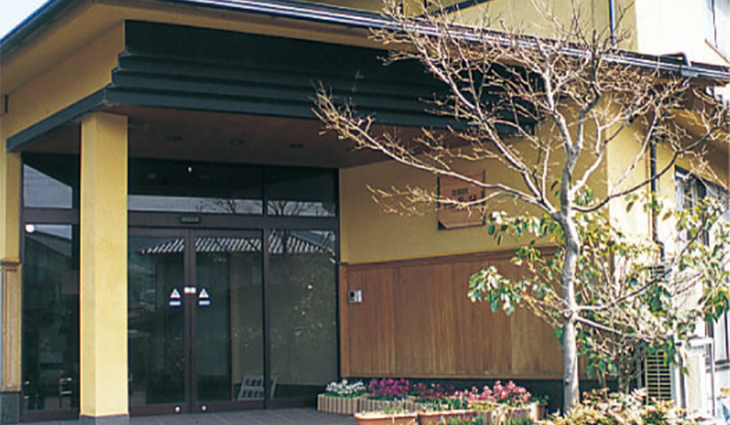 A minshuku is a type of accommodation that is smaller and cheaper than a ryokan. Many minshuku are individually owned, so the facility often reflects the personality of the owner. Minshuku are generally popular as an option that allows for more interaction with the owner and other guests.
A minshuku is a type of accommodation that is smaller and cheaper than a ryokan. Many minshuku are individually owned, so the facility often reflects the personality of the owner. Minshuku are generally popular as an option that allows for more interaction with the owner and other guests.
How to wear a yukata at a ryokan
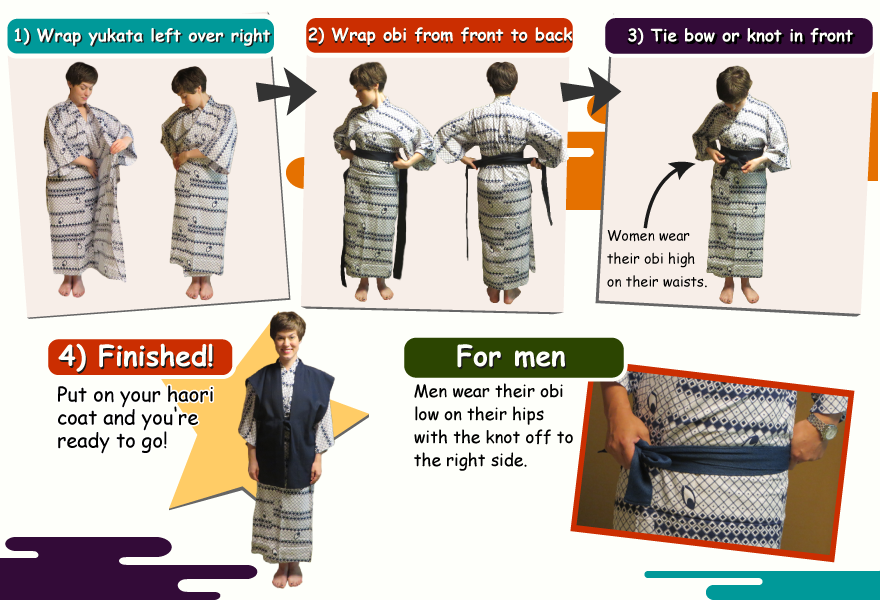
When staying at a ryokan, each guest is provided with a yukata in their room to change into. You can enjoy your meals, head to the bathing areas, or even sleep in your yukata. The way a yukata is worn differs slightly between males and females, but learning how to put one on is very easy.
THIS ARTICLE IS BASED ON INFORMATION FROM 01 06,2016








